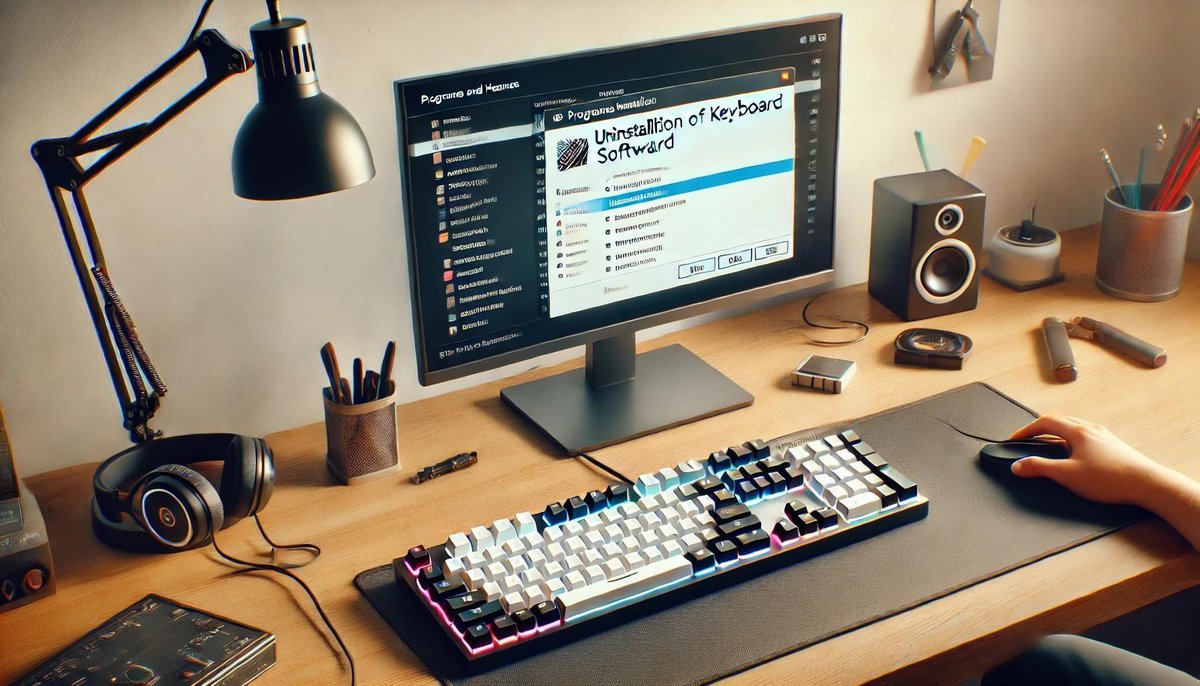How to Uninstall a Game Keyboard for Optimal Performance and Space Saving
Are you looking to free up some desk space or improve your system's performance by uninstalling a game keyboard that you no longer use? In this step-by-step guide, we'll walk you through the process of removing your game keyboard efficiently and safely. Whether you're upgrading to a new model or simply decluttering your setup, our instructions will ensure that you don't miss a step. From disconnecting the device to removing any residual software, we’ve got you covered. Follow these easy steps to optimize your workspace and system performance with minimal hassle.

Preparing Your System for Uninstallation:
Before uninstalling a game keyboard, it's crucial to prepare your system to ensure a smooth process and optimal results. Start by closing all active applications and games to prevent any interruptions during the uninstallation. Next, disconnect the game keyboard from your computer, either by unplugging it from the USB port or disconnecting it from the wireless receiver. This prevents any interference from the device while the software is being removed.
Open your system's Control Panel or Settings menu and navigate to the "Programs and Features" or "Apps & Features" section to locate any software associated with the keyboard. Additionally, check for any specific drivers or configuration tools that might be installed. Before proceeding with the uninstallation, ensure that you have administrative privileges to make changes to your system.
Following these preparatory steps will help avoid potential conflicts and ensure that all components related to the game keyboard are effectively removed, freeing up space and enhancing your system's performance.
Removing the Game Keyboard Drivers:
To ensure a clean uninstallation of a game keyboard, it's crucial to remove its drivers completely. Start by accessing the Device Manager on your computer, which you can find by searching for it in the Start menu or by pressing Windows Key + X and selecting Device Manager from the list. Once open, locate the "Keyboards" section and expand it to find your game keyboard. Right-click on it and select "Uninstall device." If prompted, check the box to delete the driver software for the device to remove all associated files.
After uninstalling the drivers via Device Manager, it is also advisable to use a dedicated uninstaller or cleaning utility to ensure no residual files remain. These utilities can scan for and remove leftover driver files that might not be deleted automatically.
Popular tools for this purpose include CCleaner or similar applications that offer driver management features. Finally, restart your computer to complete the uninstallation process. This reboot ensures that all changes are applied and that your system recognizes the removal of the drivers. Following these steps helps in optimizing system performance and freeing up space, making it easier to manage your peripherals and maintain a clutter-free setup.
Cleaning Up Residual Files and Registry Entries:
After uninstalling a game keyboard, it's essential to clean up residual files and registry entries to ensure optimal performance and free up valuable system space. Even after the standard uninstallation process, leftover files and entries can clutter your system. To address this, start by manually searching for and deleting any residual files.
Navigate to the installation directory of the keyboard and remove any remaining files or folders associated with it. Additionally, check common directories like Program Files and AppData for leftover components. Next, clean up the Windows registry to eliminate obsolete entries. Open the Registry Editor by typing regedit in the Start menu search bar. Be cautious, as incorrect modifications can harm your system. Use the "Find" feature to search for the keyboard’s name and delete related entries. To streamline this process, consider using a reputable third-party uninstaller or registry cleaner that can automate the removal of residual files and registry entries, ensuring a thorough cleanup and better system performance.

Effectively uninstalling a game keyboard involves a few straightforward steps that can help optimize your system's performance and free up valuable space. By following this step-by-step guide, you can ensure that the keyboard is completely removed from your system, avoiding any potential conflicts or issues that could impact your gaming experience.
First, make sure to properly disconnect the keyboard from your computer and remove any associated software through your system’s settings or control panel. Next, manually check for and delete any remaining files or registry entries to prevent residual clutter.
Finally, restart your computer to complete the uninstallation process and verify that the keyboard has been fully removed. By taking these measures, you not only clear up space but also enhance your system's efficiency, paving the way for a smoother and more responsive gaming setup. Whether you’re upgrading to a new keyboard or simply decluttering your workspace, these steps will ensure a clean and effective uninstallation process.
